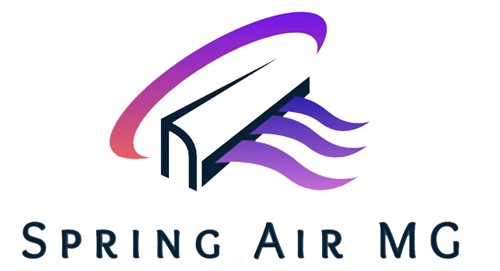From Bethesda and Rockville to Silver Spring and Germantown, homes in Montgomery County handle four real seasons, heavy pollen, and plenty of renovation dust. That mix settles inside return and supply lines, then recirculates every time the blower runs. Here is what you can realistically expect before and after a professional air duct cleaning, how to gauge the difference, and how to keep the results longer.
Before Cleaning: Common Clues Something Is Off
- Dust that comes right back: You wipe in the morning and see a gray film by late afternoon, especially near supply registers.
- Allergy flare-ups when the system starts: Sneezing, scratchy throat, or itchy eyes are worse at home than outdoors.
- Musty or stale odors at startup: Often tied to moisture and debris inside returns or near the coil.
- Uneven airflow and room hot or cold spots: Far rooms feel stuffy while others are fine.
- Longer run times and rising energy bills: Air has to fight through buildup, so equipment works harder.
- Vent grilles that look fuzzy: Lint and pet hair collect on the edges, sometimes leaving dark streaks on walls.
After Cleaning: Results You Can See and Feel
- Cleaner surfaces: Dust settles more slowly. Most homeowners notice fewer wipe downs within the first week.
- Easier breathing: Fewer particulates circulate, which helps allergy and asthma sensitive family members.
- More even airflow: Previously weak registers deliver stronger, steadier air. Temperature balance improves across levels and distant rooms.
- Fresher smell when the system kicks on: Musty or stale odors usually diminish once debris is removed and the drain line and coil area are addressed.
- Smoother, quieter operation: Restored airflow reduces strain on the blower, which can lower noise and runtime.
- A filter that stays cleaner longer: Post cleaning, a fresh filter does not load up as quickly because the system is not releasing old debris.
How To Verify Improvements Without Guesswork
- Before and after photos: Ask your provider to shoot inside trunks and key branches. Clean, matte metal or clean duct liner is easy to spot.
- Airflow readings at vents: A simple anemometer reading before and after shows higher feet per minute at previously weak registers.
- Static pressure check: Lower external static pressure after cleaning indicates less resistance in the airstream.
- Odor test at startup: Run the system from Off to On and note any change in smell intensity.
- Dust swipe test: Wipe the same shelf at the same time of day for a week before and a week after. Most homes see a clear reduction.
What Drives the Quality of the Result
- Method: Negative pressure plus mechanical agitation is the gold standard.
- Scope: Returns and supplies both need attention, not just vent faces.
- Components: Blower compartment and coil housing should be inspected and cleaned when needed.
- Duct condition: Leaky or damaged ducts pull in attic or crawlspace dust. Sealing and minor repairs preserve your results.
- Filtration and humidity: A properly sized MERV 11 to MERV 13 filter and indoor RH near 40 to 50 percent help keep ducts cleaner.
What A Professional Visit Includes
- Walkthrough and system inspection with register count, duct type identification, and photos.
- Containment and negative pressure using a high CFM HEPA vacuum connected to trunk lines.
- Mechanical agitation with rotary brushes and air whips to release debris so the vacuum captures it.
- Component cleaning in the blower compartment and return plenum, with coil cleaning when required.
- Verification through visual checks and photos, then reassembly and tidy cleanup.
Time on site: About 2 to 3 hours for many condos and townhomes, 3 to 4 hours for most single family homes. Large or heavily contaminated systems can take longer.
What Not To Expect
- A cure for every odor or dust problem: Source issues still matter. Moisture, smoking, open fireplaces, or unsealed duct leaks need targeted fixes.
- Permanent results: Dust returns over time. Most Montgomery County homes do well with a 3 to 5 year cadence, and 2 to 3 years for homes with pets, strong allergies, or recent renovations.
- Automatic mold remediation: If growth is present, correct the moisture source and use EPA registered treatments only when justified.
Keep Your “After” Results Longer
- Upgrade filtration if your blower supports it.
- Change filters on time, especially during peak cooling or heating.
- Keep indoor humidity near 40 to 50 percent.
- Seal accessible duct leaks in attics and crawlspaces to stop dust intrusion and energy loss.
- Vacuum vent grilles and surrounding walls regularly.
- Schedule coil and condensate drain maintenance each cooling season.
- Plan a post renovation cleaning after sanding, drywall, or floor work.
FAQs
Will cleaning lower my utility bills
Restored airflow reduces runtime and strain, which often trims energy use. The exact savings depend on system condition and home envelope.
Do I need chemicals
Not for routine cleanings. Antimicrobials are reserved for verified microbial issues and should be EPA-registered.
Can I DIY with a shop vacuum
No. Consumer equipment cannot generate the airflow and filtration needed for deep system cleaning and can damage flexible ducts.
Will cleaning damage my ducts
Not when performed correctly. Trained techs match tools to rigid metal, flex, or lined duct and note pre existing issues.
